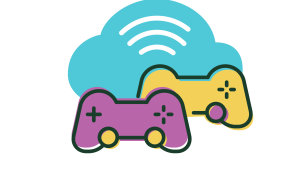
Research suggests that some types of screen time are better than others. Factors that may impact the quality of screen time include content, context, and interactivity. Content should promote learning and connection, not violence or harm. Parents of young children should co-view media (context) when possible. Regular conversations about media use and habits can also improve outcomes. Some experts argue that active media use is more beneficial than passive media use.
Content: The best type of media content encourages learning, social connection, and creativity. Media that supports educational learning and connection can have great benefits for children. Examples include family movie night, multiplayer video games, tutorial videos, or a viral dance challenge. On the other hand, content that contains excessive violence and violent characters should be avoided, especially for young children. This includes violent video games or TV shows, as well as news that contains descriptions or images of real-world violence.
Context: It’s not only about what children are watching but how they watch it. For children five and under, co-viewing media or co-playing games is highly recommended. This can be a fun and appropriate way for young children to safely engage with media. It can also help parents develop trust and understanding of their child’s media use. With reasonable time restrictions, co-watching age-appropriate and educational content can have learning and developmental benefits. Unsupervised TV or phone time for young children is not recommended.
As children get older, parents are often less aware of what their child may be seeing or doing online, especially once children get a smartphone. Establishing a trusting relationship with children and teaching self-regulation skills are essential. We want children to feel comfortable coming to an adult if they see something upsetting online. Regular conversations can help adults learn what content is beneficial and what content is harmful for the particular child in their life and establish a safe environment where they can provide guidance.
Interactivity: There is some evidence that active media use is more beneficial than passive use. Passive use includes scrolling social media and watching videos. Active use includes messaging, playing games, and commenting or liking posts. Generally, research has found better mental, social, and learning outcomes associated with active use than passive use. Yet, some variations do exist. For example, watching an educational video (passive) is likely better than playing a violent video game (active). Leaving a mean comment on a peer’s post (active) is likely worse than watching a funny cat video (passive). There is more to learn about the nuances of different digital media uses and behaviors. Still, experts agree that intentional use, with a clear goal or value-alignment, is the best type of screen time.
Rather than setting screen time limits, you might think in terms of the three C’s of media use: what’s on the screen, the content, what’s the context? Is there a social engagement around it? Is it displacing something? Is the context the wrong time that the child should really struggle, at least sometimes with regulating their behavior and emotions? And your own child, how old are they? What’s their temperament? And is there a disability, or some reason that a screen might be particularly valuable for that child? So person, parents know their own child, so it’s hard to have these blanket rules.





